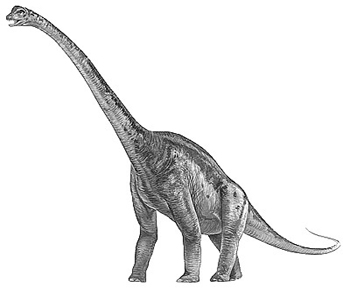
Malawisaurus Dinosaur is a dinosaur that lived during the Late Cretaceous period, approximately 100 to 95 million years ago. It was a herbivorous dinosaur belonging to the group of long-necked sauropods called Titanosauria. Named after Lake Malawi in Africa, where its fossils were discovered, Malawisaurus provides valuable insights into the diversity and distribution of dinosaurs on the African continent.
Malawisaurus was a relatively large dinosaur, estimated to have reached lengths of around 15 meters (49 feet) and had a weight of several tons. Its most distinguishing feature was its long neck, which allowed it to browse vegetation at considerable heights. Its neck consisted of numerous elongated vertebrae, enabling it to reach leaves and branches that were otherwise inaccessible to other herbivores. Instead, Malawisaurus likely swallowed plant material whole and relied on its powerful digestive system to extract nutrients from the tough plant matter.
Malawisaurus Facts :
| Name: | Malawisaurus Dinosaurs |
| Size: | 15 meters |
| Main Facts: | Malawisaurus is a dinosaur that lived during the Late Cretaceous period, approximately 100 to 95 million years ago. |
Its body was supported by strong and sturdy legs, each ending in a hoof-like claw. These adaptations allowed Malawisaurus to move on land, although it may have also ventured into bodies of water due to the proximity of Lake Malawi. It is believed that Malawisaurus moved in a slow and deliberate manner, using its strong limbs to support its immense weight.
The discovery of Malawisaurus fossils has contributed to our understanding of dinosaur fauna in Africa during the Late Cretaceous. Alongside other dinosaur species found in the region, Malawisaurus helps paint a picture of the diverse ecosystems that existed on the continent millions of years ago. However, due to the limited fossil record of Malawisaurus, many aspects of its biology and behavior remain speculative. It is difficult to ascertain its precise dietary preferences, social structure, or reproductive habits without additional fossil evidence.